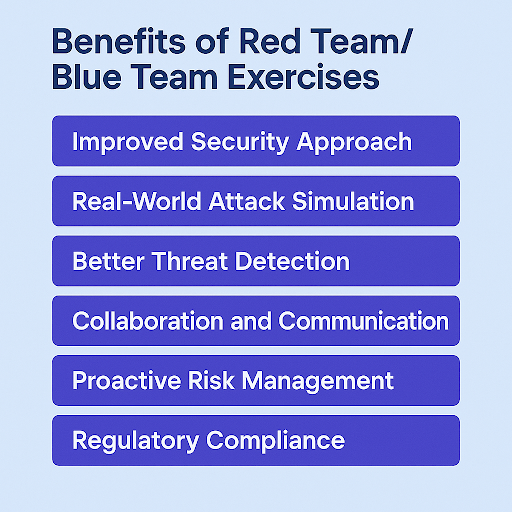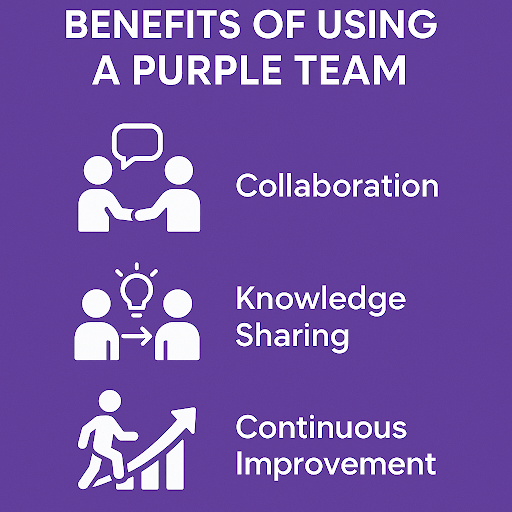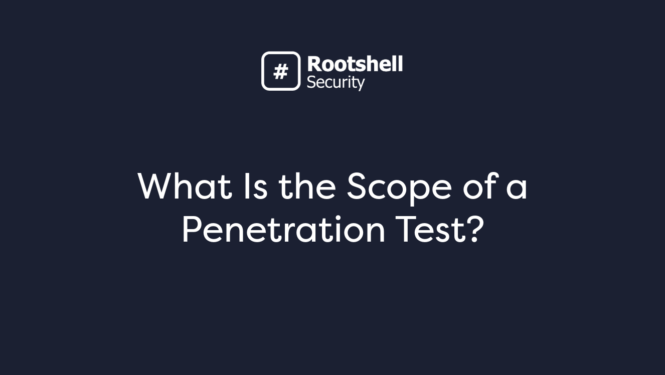With new cyber threats arising all the time, protecting data has become a continuous challenge. A recent forecast from Proxyrack estimates that global cybercrime costs will reach approximately $11.9 trillion by 2026.
A strong cybersecurity approach should therefore be about striking a balance between finding vulnerabilities and building defences. This involves carrying out structured exercises that involve Red Teams and Blue Teams. But what exactly do these teams do? And how do they work together to strengthen cybersecurity?
In this article, we will explore the red team and blue team approaches to cybersecurity, including their differences and how combining them can improve cloud security.
What Is a Red Team?
A Red Team mimics the role of a real-world attacker. This team is tasked with thinking like a cybercriminal, using tactics, techniques, and procedures (TTPs) that threat actors would use to breach systems, avoid detection, and exploit vulnerabilities.
Red Team activities often include:
- Penetration testing
- Social engineering
- Physical penetration attempts
- Exploiting zero-day vulnerabilities
The goal? To test how well your organisation’s security can withstand a real attack.
Red Teams are strategic and persistent. Their findings often reveal blind spots in your systems, processes, or user behaviour that routine scans might miss.
What Is a Blue Team?
A Blue Team, on the other hand, is responsible for defence. This team focuses on detecting, responding to, and stopping attacks. Their job is to maintain the security of the organisation. Although many companies prioritize prevention as the gold standard in security, detection and remediation are just as important.
One of the most important metrics to consider when conducting Blue Team assessments is your organisation’s breakout time, the period between when an intruder first compromises a system and when they can move across the network. According to the 2024 CrowdStrike Global Threat Report, the average breakout time fell to just 62 minutes, down from 84 minutes the previous year. This shrinking window highlights the urgency of quick detection and response in preventing further breaches.
Blue Team duties include:
- Monitoring logs and alerts
- Incident response
- Threat hunting
- Patch management
- Improving detection and response capabilities
Differences Between Red and Blue Teams
We understand that protecting your digital assets can be a challenging task. While red and blue teams are important, they both play very different roles within a cybersecurity strategy. Understanding the differences between Red and Blue Teams and the unique role they hold may be the first step in improving your approach to cybersecurity:
Aspect | Red Team | Blue Team |
Objective | Simulate cyberattacks to find vulnerabilities | Defend systems and reduce cyber threats |
Approach | Offensive, replicating real-world attack scenarios | Defensive, focused on detection and response |
Primary Activities | Penetration testing, social engineering | Threat detection, incident response, and system hardening |
Mindset | Think like an attacker | Prioritize the protection of IT systems |
Tools & Techniques | Custom exploits, attack simulations, threat emulation | SIEM, IDS, firewalls, and continuous system monitoring |
Outcome | Reveals security weaknesses and gaps | Strengthens defence and improves resilience |
While red teams challenge your defences by acting like attackers, blue teams work to find, respond to, and recover from threats. Together, they create a collaborative testing approach that helps organisations with cyber threats.
Must-Have Skills of Red and Blue Teams
A comparison of skills between Red and Blue Team cybersecurity roles highlights differences that work together to protect an organization. Here are the best of each:
Red Team Skills:
Penetration Testing: Red Team members must be skilled in identifying vulnerabilities and exploiting them to gain unauthorized access to systems. They need deep knowledge of common attack vectors, including web application exploits, phishing, and more.
Social Engineering: A huge part of the Red Team’s strategy involves tricking users into disclosing sensitive information or performing actions that compromise security. Red Team members need to understand psychological manipulation.
Threat Emulation: Red Teamers must replicate sophisticated cyberattacks, often mimicking tactics, techniques, and procedures (TTPs) used by real-world attackers to assess how well the organization can withstand such threats.
Strong Knowledge of Attack Tools: They need to be proficient with attack tools which allow them to simulate real-life attacks and map out system weaknesses.
Scripting and Automation: The ability to write scripts or develop tools that automate attack procedures helps Red Team members scale their efforts and test larger networks.
Blue Team Skills:
Incident Response: Blue Team members are responsible for detecting, analyzing, and responding to cybersecurity incidents. This requires a deep understanding of attack patterns and knowing how to act quickly.
Threat Hunting: Proactively searching for signs of potential threats in a network or system is very important. Blue Teams must know how to search through logs and network traffic for abnormal behaviour or signs of compromise.
System Hardening: Blue Team members must continuously improve and secure systems by closing vulnerabilities, applying patches, and making sure proper security configurations are in place. This includes setting up firewalls, encryption, and access controls.
Knowledge of Compliance & Regulations: Blue Teamers need to be well-versed in industry regulations and standards, such as GDPR, HIPAA, or NIST, to make sure their organization meets security requirements and avoids legal or financial penalties.
Benefits of Red Team/Blue Team Exercises
Improved Security Approach: Red Team/Blue Team exercises provide a thorough understanding of an organization’s vulnerabilities, helping to strengthen security measures and systems.
Real-World Attack Simulation: Red teams simulate real-world attacks, enabling Blue teams to assess how well they can detect, respond to, and control these threats in a controlled environment.
Better Threat Detection: Blue teams can fine-tune their monitoring and response strategies by observing the tactics used by Red teams, improving their ability to detect attacks before they cause damage.
Collaboration and Communication: Red and Blue teams must work together after exercises to debrief, identify areas of improvement, and share insights.
Proactive Risk Management: Regular Red Team/Blue Team exercises allow organizations to identify and address security gaps before they are exploited.
Regulatory Compliance: These exercises can help organizations meet regulatory requirements by demonstrating a proactive approach to identifying and mitigating vulnerabilities, which is often mandated by compliance standards.
How Do the Red Team and Blue Team Work Together?
The Red Team and Blue Team work together in a collaborative way to strengthen an organization’s cybersecurity. After each exercise, the two teams come together for a debriefing session, where the Red Team provides insights into their tactics and the Blue Team shares their response strategies.
These exercises help your company to identify weaknesses in the people, processes and technologies, as well as pinpoint security gaps such as backdoors and other access vulnerabilities that may exist.
This information helps companies to strengthen their defences and train their security teams to better respond to threats. Since many breaches can go undetected for months or even years, it is important to conduct red team/blue team exercises on a regular basis.
According to IBM’s 2025 Threat Intelligence Index, long dwell times give attackers the chance to use existing tools and credentials to steal data for weeks or months after the initial breach.
This highlights the need for quick detection and response to reduce the damage from cyberattacks.
What About the Purple Team?
Now that we’ve explored the differences between red and blue teams in cybersecurity, let’s look into the purple team. The Purple Team is a combination of the Red and Blue Teams, focusing on collaboration and communication between offensive and defensive cybersecurity roles. It encourages a collaborative approach where the red and blue teams work together, aligning their strategies to achieve a shared goal.
Here’s how the Purple Team adds value:
Collaboration: They promote regular interactions between Red and Blue Teams to improve security.
Knowledge Sharing: Purple Teams help with the sharing of attack methods and defensive tactics between teams, leading to better-informed security measures.
Continuous Improvement: They identify weaknesses in the defence system by integrating offensive tactics and defensive techniques.
Shared Challenges of Red Teams, Blue Teams and Purple Teams
Despite having different roles, red, blue, and purple teams often face similar challenges in cybersecurity operations.
Resource Constraints: Limited time, tools, and personnel can impact the effectiveness of each team’s operations.
Tool Overload: Juggling too many platforms or poorly integrated systems can hinder workflows and slow response times.
Communication Gaps: Lack of clear communication between offensive (red) and defensive (blue) teams can lead to missed insights or duplicate efforts.
Burnout & Fatigue: The high-pressure nature of cybersecurity roles can lead to fatigue, especially during long-term incidents or intense testing cycles.
Skill Gaps: Keeping skills sharp across both offensive and defensive domains is a challenge, particularly as threats grow more complex.
Aligning With Business Goals: Teams often struggle to align technical objectives with broader organisational strategies and risk tolerance.
Cybersecurity with Rootshell Security BAS
In conclusion, strengthening cybersecurity requires collaboration between Red, Blue, and Purple Teams. RootShell Security’s Breach and Attack Simulation (BAS) is an easy-to-use solution which you can personalise to the needs of your company.
It supports collaboration between Red and Blue Teams, ensuring that offensive and defensive strategies are aligned to create a strong strategy. Are you interested in seeing Rootshell’s Breach and Attack Simulation (BAS) in action? Schedule a demo to discover how BAS can improve collaboration across your Red, Blue, and Purple Teams.





